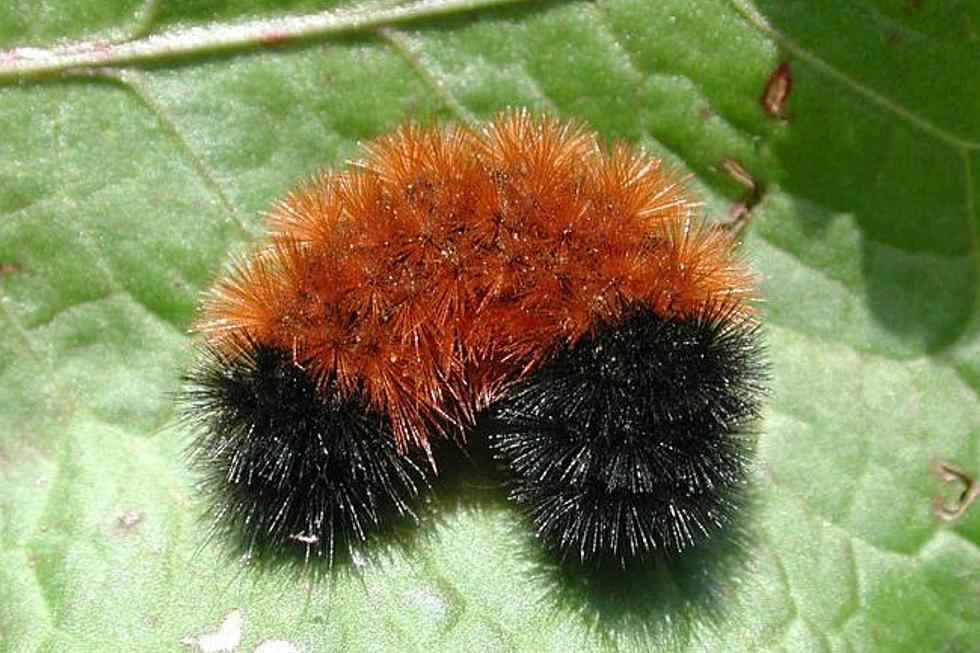
Can Woolly Bear Caterpillars Predict Winter Weather?
Woolly Bear Caterpillars have the reputation of being able to forecast the winter weather.
Legend states: If their rusty brown-colored band is wide, it will be a mild winter. The more black there is, the more severe the winter.
Where did this strange theory come from? It's apparently been around since colonial times. But in a way...it makes sense --- there's 13 weeks in winter...and a Woolly Bear Caterpillar has 13 segments. The longer the brown band of its body -- the shorter the winter = More brown on the ground does mean snow, so it makes sense...kind of.
According to the Iowa DNR; in 1948, Dr. C. H. Curran, curator of insects at the American Museum of Natural History in New York City, collected as many caterpillars as he could in a day, figured out the average number of reddish-brown segments and used it to forecast the upcoming winter season. He continued this experiment for nearly a decade, to see if there was any scientific truth to the 'legend.'
So...what did he find out?
Between 1948 and 1956, Dr. Curran’s average number brown-segments took up more than 1/3 of the woolly bear’s total body.
The corresponding winters were milder than average, and Dr. Curran concluded that the the local folklore could have a bit of truth to it.
Since then, scientists have found that the size of the reddish-brown band increases as caterpillar matures and that wet weather increases the size of the black bands. The Arctic Woolly Bear can live up to 14 years!
This is the time of the year when we'll see them bustling about in Iowa. (There's also a batch in the spring, but the fall generation are considered the 'weather predictors')
These caterpillars are incredible little creatures. Woolly bears search for sites under bark or inside rocks or logs -- which is why we see them scurrying across roads and sidewalks. Over the cold winter months, they will enter a “frozen” state -- its heart stops beating, then its gut freezes, then its blood, followed by the rest of the body until the spring -- when they emerge as an Isabella moth.
Giraffe Spotted in Iowa
More From K92.3





![An Incredible Midwest Ice Palace Will Open This Weekend [PHOTOS]](http://townsquare.media/site/675/files/2024/01/attachment-ice1.jpg?w=980&q=75)



